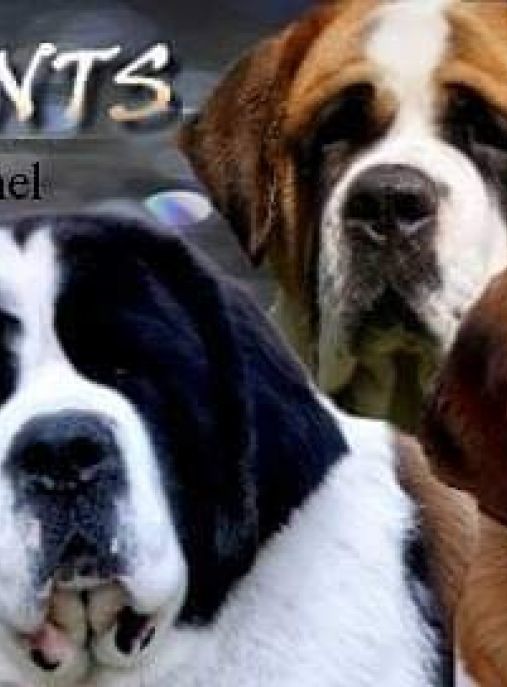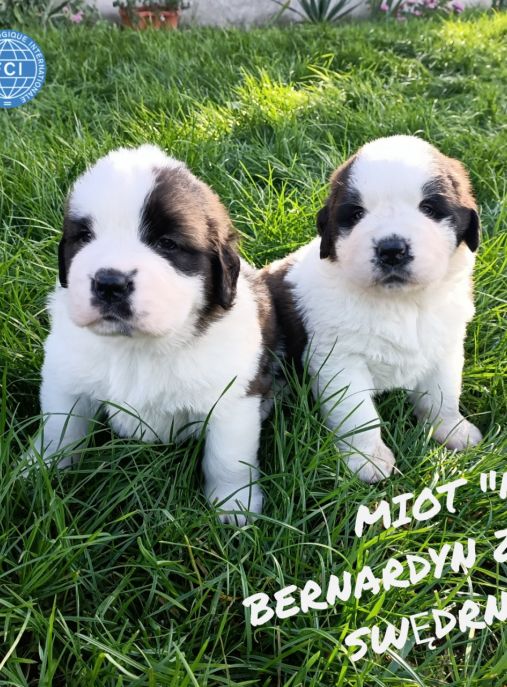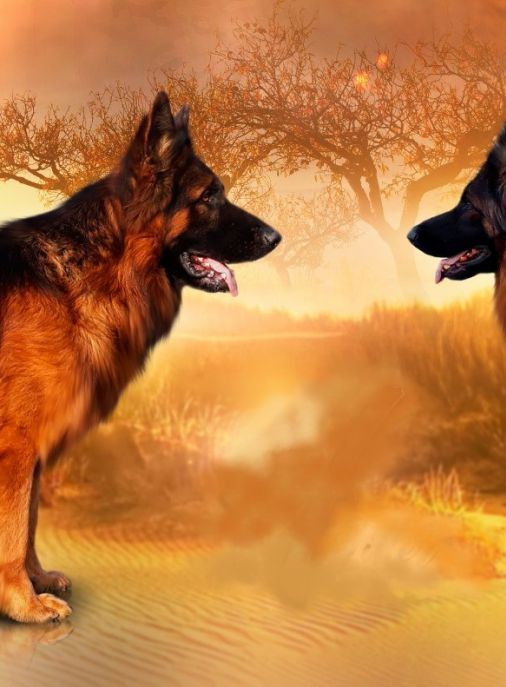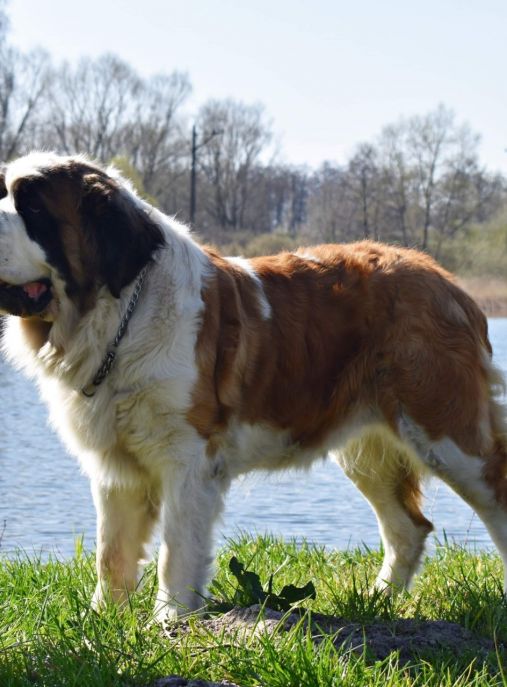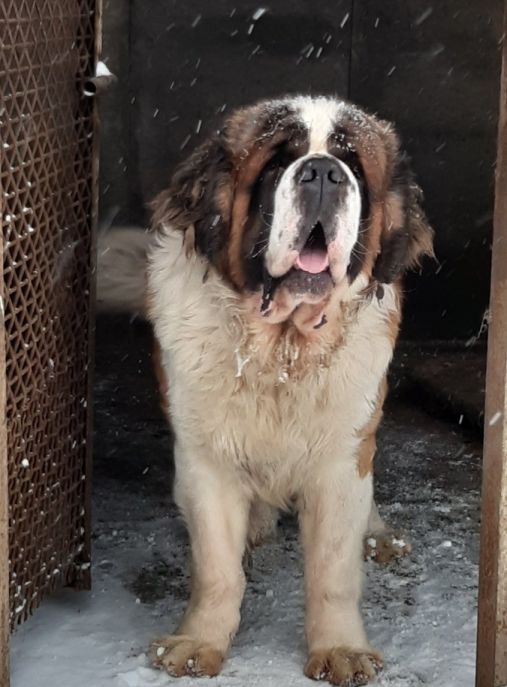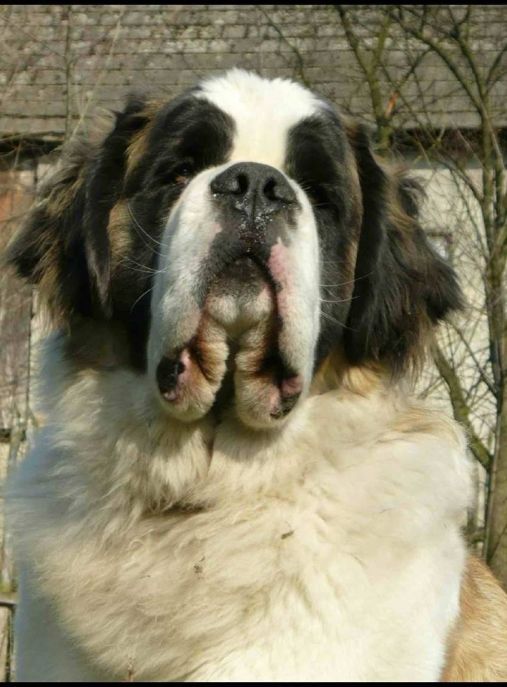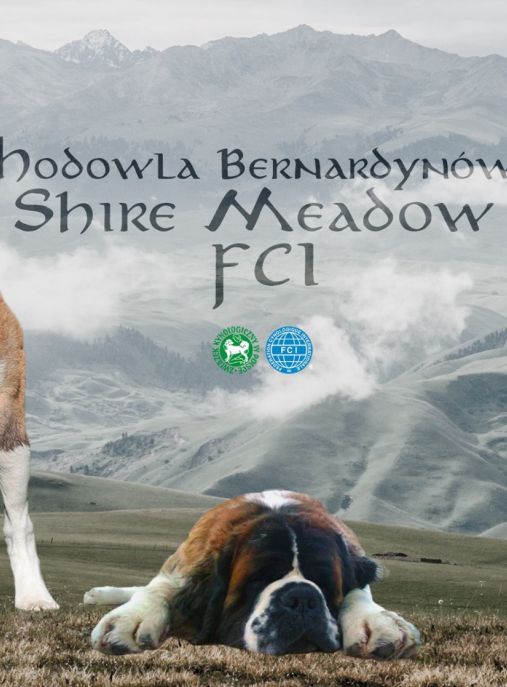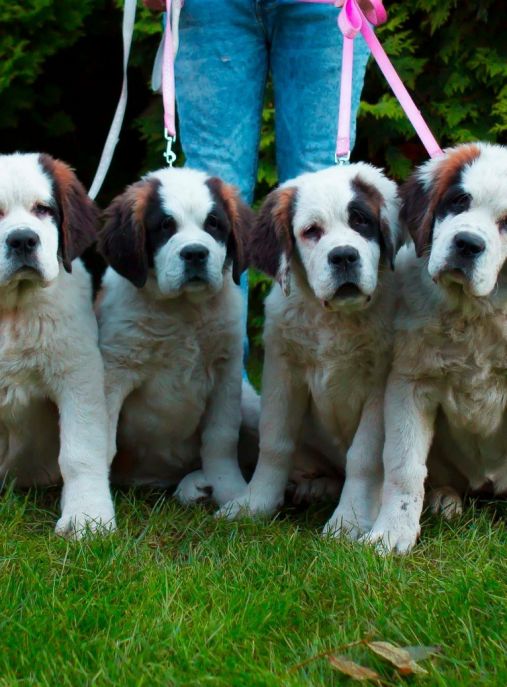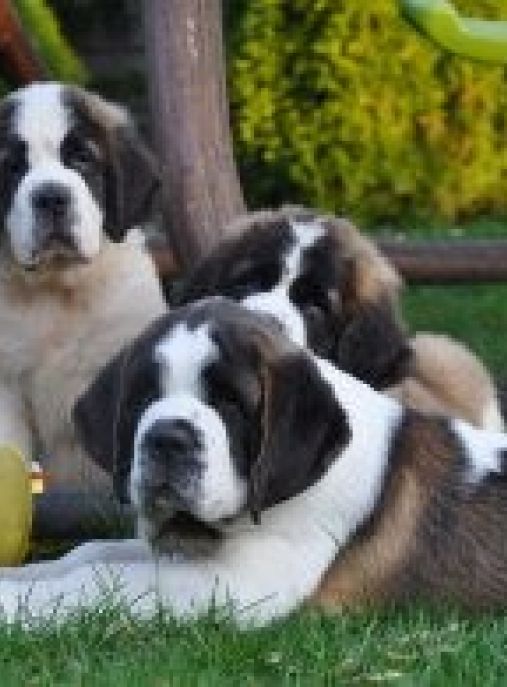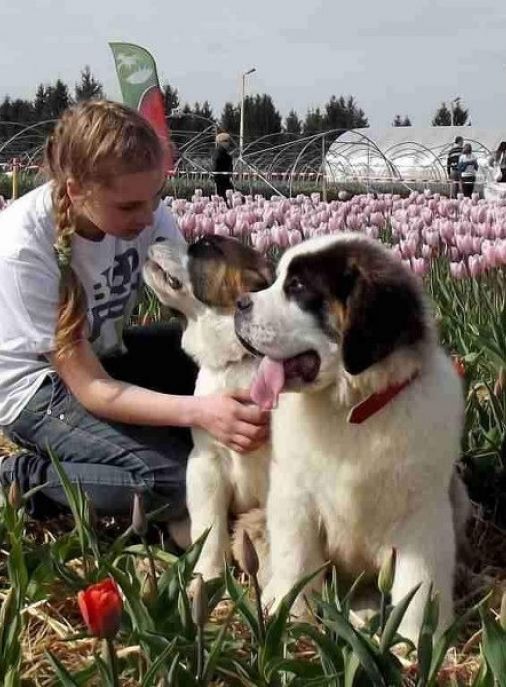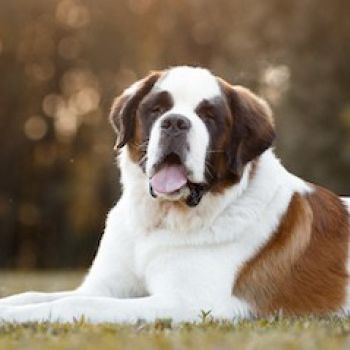The Saint Bernard takes its name from the hospice on the Great St Bernard Pass in the Alps. Its ancestors are the ancient molossians that accompanied the Romans on military expeditions north of the Alps. In the 17th century, monks raised the Bernards as guides and mountain rescuers to help people find their way at night or in the fog. Their excellent sense of orientation and sense of smell were invaluable.
St. Bernards can sense the arrival of a snow avalanche, and in high snow they move quickly and efficiently.
They worked in fours in rescue operations. After finding the man, two dogs lay down next to him to warm him, the third revived him by licking his face, and the fourth returned to the monastery for help. A revived man could eat brandy from a barrel hanging around the neck of a St. Bernard.
Contemporary rescue technology has made the rescue predispositions of St. Bernard dogs of secondary importance. Nowadays, they serve more as friends of the family. Until 1830, there were only St. Bernards short-haired. Later, an admixture of Newfoundland and Mastiff was introduced to the breeding to increase the size and vitality of the dog. Long-haired puppies enjoyed success in the countryside. There, they aroused the interest of wealthy British tourists who brought them to England and began to make modifications to the breeding.
From that moment on, St. Bernards were less able to work in the snow. Contemporary breeding aims to obtain a lighter and more mobile dog with tight lips and eyelids. The most famous representative of St. Bernard dogs was the legendary Barry I. It lived in the years 1800-1814 and at that time, along with other dogs, saved as many as 40 people. Its monument can be seen at the aforementioned Great St Bernard Pass, and a stuffed figure with an inherent barrel around the neck in the Bern Museum.
- Life expectancy: 8-10 years
- Height at the withers: male - 70 - 90 cm
- Height at the withers: female - 65 - 80 cm
Even though St. Bernard is descended from the fierce molossians of ancient Rome, it is a gentle and kind-hearted giant. It works perfectly as a faithful friend and companion of all household members. It needs the closeness of its owner, but it does not require much activity from him. Long, leisurely walks are enough. Despite its dimensions, St. Bernard is very understanding and caring towards the youngest. When it is a puppy, it is good for it to take a basic obedience course, thanks to which it will grow up to a well-balanced four-legged friend. St. Bernard dogs behave with dignity and seriousness. They do not get into fights with other dogs, but they are able to defend themselves when provoked. They are easy-to-raise, obedient and quick-learning dogs. The Saint Bernard is also a good watchman. It is a breed that can predict changing climatic conditions, especially the arrival of an avalanche. They are dogs that work perfectly with humans, so they are used when looking for people buried in an avalanche.
This breed is resistant to climatic conditions, and even severe frost is not terrible for them. On hot days, it is better for the dog to be in the shade or at home. Unfortunately, the popularity of this breed resulted in the emergence of kennels that breed dogs only for profit, regardless of their welfare. Unfortunately, this approach means that the dog may become ill, aggressive or fearful in the future, which are undesirable traits for a Saint Bernard. Before you make a purchase decision, it is worth checking the breeder carefully, asking for a 4-generation pedigree, test results and x-rays for dysplasia. A breeder with passion will certainly provide all information.
The coat of the Saint Bernard Long-Haired is easy to care for. It requires daily brushing and removal of loose hair.
Regularly check the condition of your dog's eyes and ears, keeping them clean. Dogs of this breed drool a lot, so you need to regularly wipe the animal's mouth during the day.
The basic color is white with more or less reddish-brown patches. A red-brown brindle coat is also allowed, and a yellow-brown one is tolerated. Darker shades on the head are desirable. A slight black coating on the body is allowed. White markings on the chest, feet, muzzle and tip of the tail as well as an arrow on the head and spots on the neck are required.
The outer coat is straight, of medium length with a profuse undercoat. The hair is short on the head and the muzzle. There is feathering on the front legs, and clearly marked pants on the thighs. The tail is very well hairy.
St. Bernard dogs, like other dogs belonging to the largest breeds, live relatively shortly. They are resistant to harsh weather conditions, persistent and mentally strong. As with other very large dogs, regular walks rather than long walks are advisable during the first year of life when the dog's joints are forming. A young dog should not be pressured. The growing and developing St. Bernard can be given preparations that will strengthen the joints and cartilage. It is also worth asking the breeder about it.
Proper diet of the dog is extremely important in order to prevent the occurrence of gastric torsion.
St. Bernard Long-haired is a very well muscled dog with a strong bones. For this reason, it should be properly nourished. Remember that the dog is a carnivore. Both its teeth and digestive tract are adapted to digesting raw meat. A good diet for virtually any dog is the Barf Diet. It is based on serving raw meat of various species of animals, their offal and meat bones. In the case of this diet, appropriate supplements should also be given, if of course there is a need for it. It is worth doing your dog periodic blood tests to find out if its body needs additional nutrients. It is very important, especially in large and giant breed dogs, to maintain the correct ratio of calcium to phosphorus. Giving these types of preparations on your own can do more harm than help.
Another way to feed uour dog is to give it a good dry food, and I don't mean supermarket foods as they contain virtually no meat. When choosing dry food, carefully read its composition. It should be cereal-free, and dried or fresh meat should be at the top of the list of ingredients.
